Discover the easiest way to create a flexible rental agreement—download, customize, and manage your month-to-month lease in minutes.
Finding the right place to live can be daunting but a Rental Agreement makes it all so much easier. Think of it as your guide to flexibility. Just like an architect has a blueprint, you can have our Rental Agreements as your blueprint. These outline the key details of your arrangement.
They state what space you’re renting, how much rent you’ll pay, and the terms of your stay. With everything spelled out, you can move forward with confidence knowing you have the support and flexibility for your next chapter.
Empower your rental experience with our meticulously crafted templates. Whether you’re seeking a vacation property, apartment, commercial space, or house, our flexible solutions are tailored to your needs. Download now in Microsoft Word format to unlock a seamless and adaptable living arrangement. Your journey to stress-free renting starts here – embrace the freedom to personalize agreements that match your lifestyle. Take the first step towards hassle-free living today.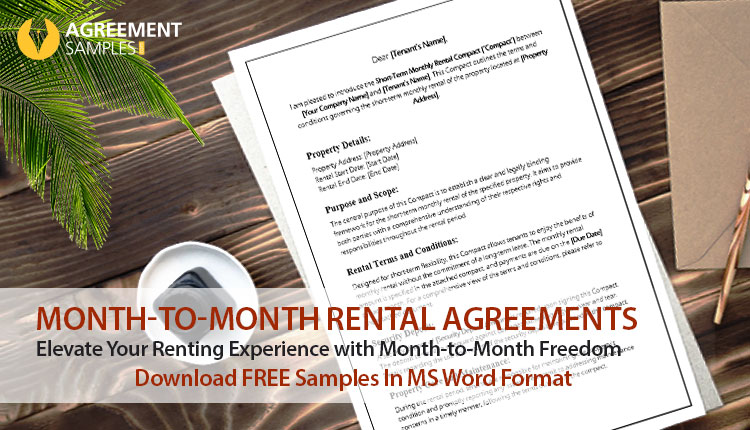
A month-to-month rental agreement is a short-term lease contract between a landlord and a tenant that automatically renews every month until either party decides to end it. Unlike a fixed-term lease (such as a 6-month or 12-month contract), this type of agreement provides greater flexibility.
In most cases, the tenant or landlord only needs to give a written notice (typically 30 days) to terminate the arrangement. Because of this, month-to-month leases are a popular choice for:
Key elements usually covered in a month-to-month rental agreement include:
This arrangement works well for both sides when flexibility is more important than long-term commitment.
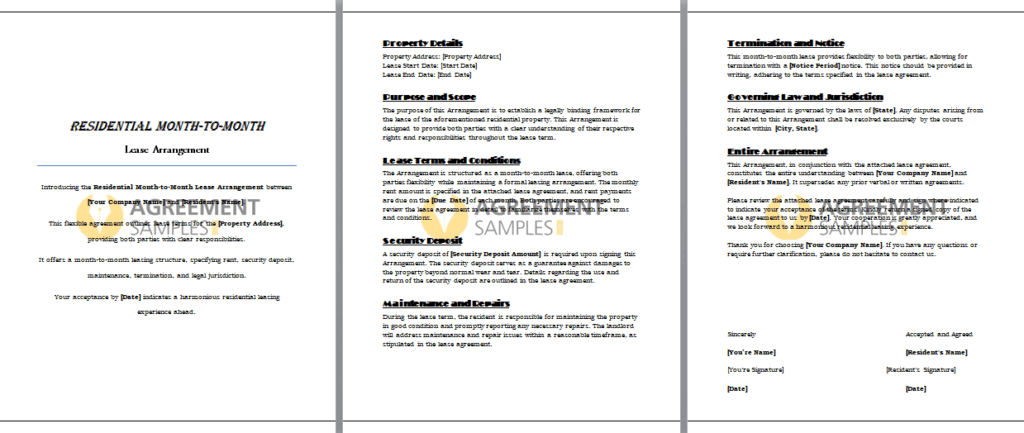


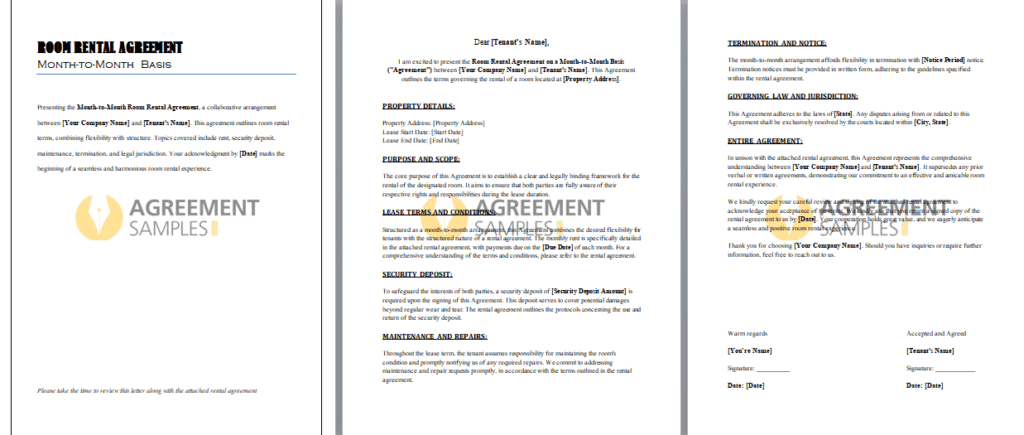
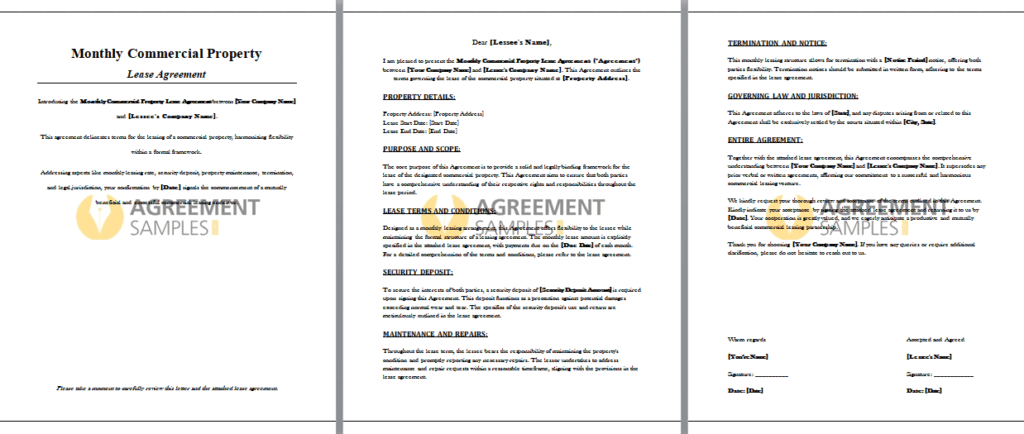
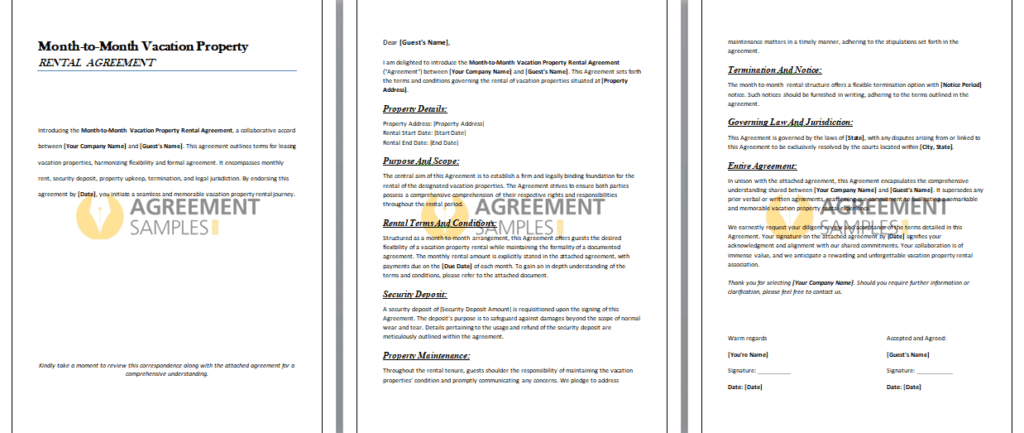
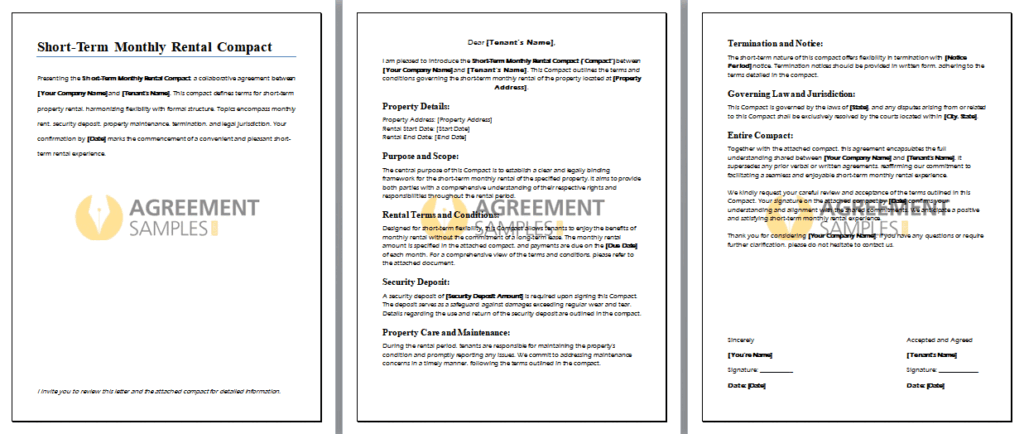

A month-to-month lease template makes renting simpler and more secure for both landlords and tenants. Instead of starting from scratch, you can use a ready-made document that covers all key terms.
Key advantages include:
In short, a month-to-month lease template offers convenience, protection, and flexibility, making it the perfect option for short-term or uncertain rental situations.

A month-to-month rental agreement should be simple, flexible, and legally clear. Here’s how to create one:
Using a template ensures nothing important is left out while keeping the process fast and professional.

A month-to-month rental agreement is a short-term lease that automatically renews every month until the landlord or tenant provides proper written notice, usually 30 days.
Yes, landlords can increase rent with proper written notice. The notice period varies by state or local law, but it’s typically 30 days.
Most states require at least 30 days’ written notice from either the tenant or the landlord. Some jurisdictions may require 60 days.
Yes. Even though it’s short-term, a signed month-to-month lease is legally enforceable and protects the rights of both tenants and landlords.
This type of lease is ideal for tenants who need flexibility and landlords who want the option to adjust terms or regain possession of their property with shorter notice.
← Previous Article
11+ Agreement Templates for the Purchase and Sale of Goods